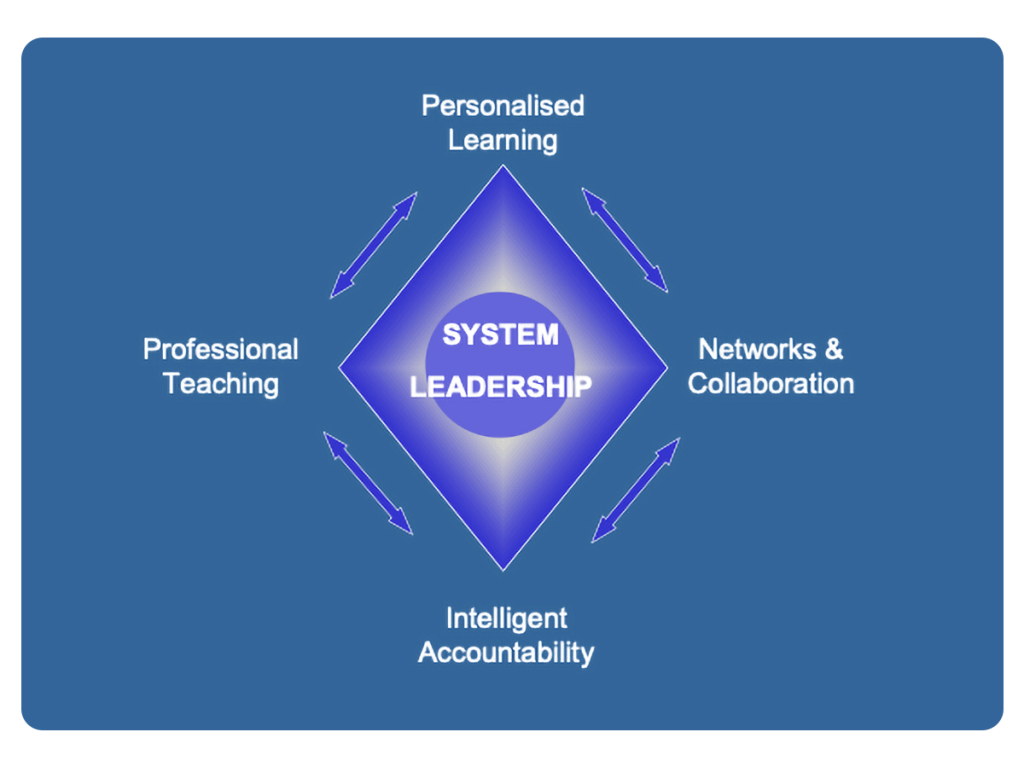We are delighted to share this thinkpiece by Professor David Hopkins, FED Ambassador and Executive Chair of the International Centre for Educational Leadership at the University of Greater Manchester. Here David argues that equity is the pathway to excellence in education, and achieving both demands a systems approach, not just individual school improvement. Drawing on international evidence, it outlines the hallmarks of a flourishing system: coherent reform, a relentless focus on teaching, effective middle-tier support, strong leadership, and collaborative networks. The “diamond of reform” – personalised learning, professionalised teaching, collaboration, and intelligent accountability – offers a framework for sustainable, system-wide improvement.
Flourishing Educational Systems[1]
The moral purpose of any educational system should surely be the achievement of both excellence and equity – meaning high standards for all. There can be no national educational excellence without stronger equity of outcomes – equity and excellence are inseparable. Indeed, equity is the surest path to excellence in education. Ensuring both equity and excellence is the key challenge that educational systems face today.
FED has argued strenuously and effectively for some time that long term planning is essential if educational goals are to be achieved. There is no doubting that, but I want to argue that we also need to adopt a systems perspective in our pursuit of moral purpose. Individual school improvements efforts are necessary but not sufficient if equity and excellence is to be achieved.
It is now over 50 years since research began to identify the characteristics of the effective school, i.e. the features of those schools where students perform better than those from other schools with similar intakes. It was this research in the 1980’s that gave us increasingly well-defined portraits of the effective school that led in the 1990’s to increasing knowledge of those strategies that result in school improvement. In the same way, we began to learn in the last decade, thanks to PISA[2], far more about the features of an effective educational system and are now exploring the dynamics of improvement at the system level.
In my recent book, Unleashing Greatness[3] I outline in more detail the characteristics of effective or flourishing systems. In short, driven by moral purpose, the features of a flourishing system are:
- A coherent strategy for system reform
- An unrelenting focus on the instructional core
- Clarity on the role of the middle tier
- Ubiquitous system leadership
- Networking as the key element of infrastructure
- An awareness of the system development continuum.
Ensure coherent system design – In underperforming systems, it is almost always the case that single strategies or policy initiatives tend to be worked on discretely, rather than as a set of complementary and mutually supportive policies. As a consequence, there is a lack of systems thinking. There are three essential elements of a coherent approach to school and system change. There is the hardware—the infrastructure, funding and physical resources as well as human and intellectual capital. There is also the software—the interaction between the school and the student, the process of teaching and learning infused by the leadership of the school. In between the two, there needs to be an operating system, or a strategy for change that the school or system employs to develop itself as a whole. Many schools, as well as ministries of education worldwide, assume that there is a direct link between the hardware and the software — as long as the resources are in place then student learning will be satisfactory. This is rarely the case, and the reason is simple. We need an improvement strategy, to link inputs to outputs, as without it, student and school outcomes will remain unpredictable. With it, schools will be more likely to translate their resources more directly into more powerful learning environments and therefore, enhanced learning outcomes for their students. The nature of such a operating system will become clearer as we progress.
Take the Instructional Core very seriously – Any system level improvement strategy must embrace an unrelenting focus on pedagogy and staff development – the instructional core. All the evidence suggests that these two factors have the most positive effect on student achievement. Across successful systems a particular form of professional learning is commonplace. Teacher actions are coherent and purposeful, and the overarching framework is similar classroom to classroom and school to school. The teachers link presentation to activity and task seamlessly. Student learning is clearly scaffolded and consequently their independence grows. Teachers have embedded within their professional repertoires a variety of specifications of practice that they use as appropriate. Professional development workshops are about extending repertoire and developing skill. Peer coaching is ubiquitous but not cumbersome or bureaucratic. These encounters are informed by agreed protocols and the follow up conversations are appreciative rather than judgemental.
Enhance the role of the middle tier – There is currently a myth of autonomy pervading school reform in many systems. The rhetoric is that if we let schools be free—release them from bureaucratic control and encourage independence – they will then flourish. This is a common and populist image. However, we know from the evidence of PISA that there is no correlation between decentralisation and achievement, and that the world’s best performing educational systems sustain improvement by:
- Establishing collaborative practices around teaching and learning
- Developing a mediating layer between the schools and the centre; and,
- Nurturing tomorrow’s leadership.
We discussed the importance of the instructional core in the previous paragraph. The argument here is to stress importance of the mediating level or middle tier organisations in securing systemic reform. The debate should move away from structures, be it a Region, District, Local Authority or Multi Academy or Charter School Trust, to the functions that the middle tier performs to support systemic improvement. Again, the evidence from PISA is clear about how the middle tier can support system improvement. In particular by i) establishing the moral purpose and narrative for coherent system reform; ii) identifying and developing school leadership capacity; iii) managing clusters, networks and lateral learning; iv) supporting school leaders in achieving their school improvement goals. In commenting on the current middle tier structure in England, the OECD said that “The challenge for an academy-style system is to find a way to share knowledge among schools.”
Make system leadership ubiquitous – System Leaders are those heads and senior leaders who are willing to shoulder system wide roles in order to support the improvement of other schools as well as their own. System leadership contributes to systemic reform in at least three ways by: i) acting as a wider resource for school improvement; ii) providing an authentic response to the needs of low attaining schools; and iii) resolving in the longer term, specific systemic challenges. In terms of ensuring a ‘flourishing system’ system leadership needs to be linked to instructional leadership to provide a system wide emphasis on those pedagogic practices that, as seen earlier, significantly contribute to achieving both equity and excellence. It is this style of leadership that realises moral purpose and fuels strategic action.
Establish the networking infrastructure – In educational systems, networks promote the dissemination of good practice, enhance the professional development of teachers, support capacity building in schools, and mediate between centralised and decentralised structures. There is still as noted earlier a tension between networks and autonomy. Yet recent OECD research notes that systems “flourished because governance and oversight arrangements gave them the freedom to create spaces for experimentation”. It is evidence like this that led me to develop a framework for ‘Networked Autonomy’. Autonomous networked schools:
- More fully express their moral purpose of enabling every student to reach their potential.
- Understand that they are as strong as the weakest link. Schools that are failing and/or underperforming can expect to receive unconditional support from all network schools, as well as from commissioned external agencies.
- Enable leadership to work more effectively with the system both within and outside the school and generate sustainable networks that deepen the impact on student learning.
- Ensure that every teacher has the maximum time to teach and to develop their professional competence.
- Move from external to professional forms of accountability.
Acknowledge the developmental continuum – As an educational system improves, it will inevitably progress through a predictable series of phases. The key point is that different strategies are required to move from one phase to another. It is now clear that when moving from say poor to fair performance then top-down or prescriptive change is often the most effective strategy. Yet because it is appropriate at one phase of development does not necessarily mean that it is equally effective across all other phases. This is the reason why in systems that continue to use top-down strategies, either because of ignorance or a predilection for control, performance inevitably stagnates. Based on the PISA research, it is now generally accepted that there are four stages of system improvement:
- ‘Poor to fair’ – ensuring basic standards
- ‘Fair to good’ – consolidating system foundations
- ‘Good to great’ – professionalising teaching and leadership
- ‘Great to excellent’ – system led innovation.
Those systems in the ‘Great to Excellent’ stage, equivalent to what we are calling here a ‘Flourishing System’, are characterised by peer-led learning for teachers and principals, additional developmental support for professionals, so that leaders can focus on pedagogy and system-sponsored innovation across schools.
In summary: the diamond of reform – In drawing together the themes of this article there are four key drivers that provide a core strategy for realising the Flourishing System. As seen in the figure below, the ‘diamond of reform’, the four drivers of personalised learning, professionalised teaching, networks and collaboration and intelligent accountability provide the core strategy for systemic improvement in most high performing or flourishing educational systems.

The four drivers coalesce and mould to context through the exercise of responsible system leadership. To reiterate the three crucial points:
- First, single reforms do not work, it is only clusters of linked policy initiatives that will provide the necessary traction.
- Second, the drivers need to build capacity as well as raising standards.
- Third, it is system leadership at all levels of the system that drives implementation and adapts policies to context.
About the author:

Professor David Hopkins. Ranked as the 16th most influential educator in the world, Professor Hopkins is a renowned expert on school improvement and teaching quality. He has served as Chief Adviser to three UK Secretaries of State for Education, Dean of Education at the University of Nottingham, and consultant to the OECD and WHO. His latest book, Unleashing Greatness, published in June 2024, reflects his lifelong commitment to advancing education globally
[1] Article commissioned by Foundation for Education Development (FED), September 2025.
[2] PISA is the OECD’s Programme for International Student Assessment. Every three years since 2000, PISA has involved more than 90 countries and economies and around 3,000,000 students worldwide in assessing what 15-year-olds can do in reading, mathematics and science, thus giving an indicator of comparative global system performance.
[3] More detail on the evidence and references to support the argument for ‘Flourishing Systems’ is found in –
Hopkins, D. (2024) Unleashing Greatness – a strategy for school improvement. London: John Catt, Hodder Education, available on Amazon.



